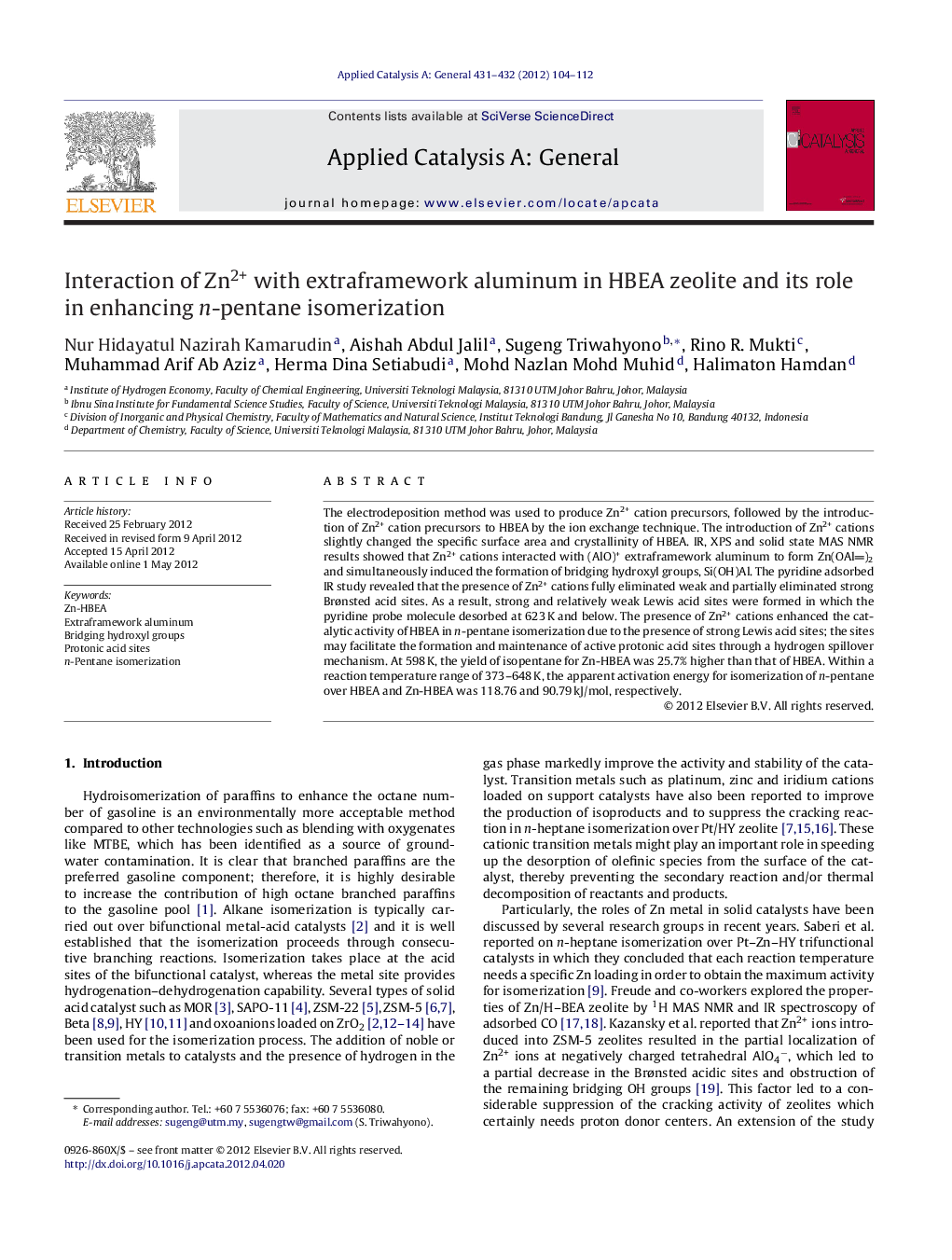| Article ID | Journal | Published Year | Pages | File Type |
|---|---|---|---|---|
| 40798 | Applied Catalysis A: General | 2012 | 9 Pages |
The electrodeposition method was used to produce Zn2+ cation precursors, followed by the introduction of Zn2+ cation precursors to HBEA by the ion exchange technique. The introduction of Zn2+ cations slightly changed the specific surface area and crystallinity of HBEA. IR, XPS and solid state MAS NMR results showed that Zn2+ cations interacted with (AlO)+ extraframework aluminum to form Zn(OAl)2 and simultaneously induced the formation of bridging hydroxyl groups, Si(OH)Al. The pyridine adsorbed IR study revealed that the presence of Zn2+ cations fully eliminated weak and partially eliminated strong Brønsted acid sites. As a result, strong and relatively weak Lewis acid sites were formed in which the pyridine probe molecule desorbed at 623 K and below. The presence of Zn2+ cations enhanced the catalytic activity of HBEA in n-pentane isomerization due to the presence of strong Lewis acid sites; the sites may facilitate the formation and maintenance of active protonic acid sites through a hydrogen spillover mechanism. At 598 K, the yield of isopentane for Zn-HBEA was 25.7% higher than that of HBEA. Within a reaction temperature range of 373–648 K, the apparent activation energy for isomerization of n-pentane over HBEA and Zn-HBEA was 118.76 and 90.79 kJ/mol, respectively.
Graphical abstractFigure optionsDownload full-size imageDownload high-quality image (78 K)Download as PowerPoint slideHighlights► Zn2+ bonded with (AlO)+ extraframework aluminum to form Zn(OAl)2. ► The formation of Zn(OAl)2 induced the formation of Si(OH)Al. ► The Brønsted acidic center exchanged from (AlO)+ to Si(OH)Al. ► Zn2+ increased Lewis acid sites and decreased Brønsted acid sites. ► The presence of Zn2+ increased the yield of iso-pentane by about 25.7% over HBEA.
